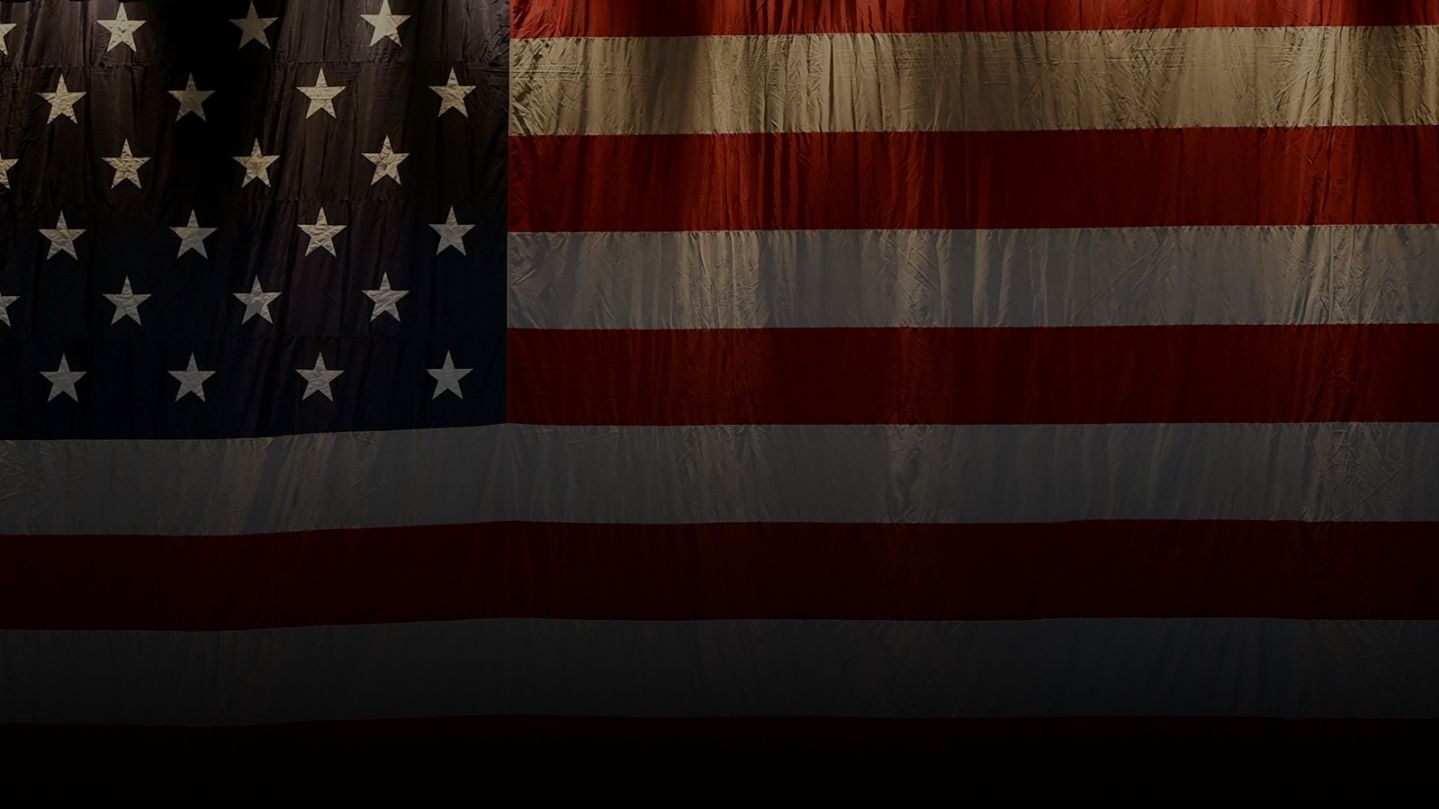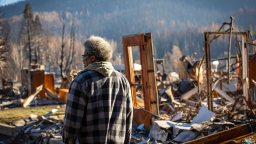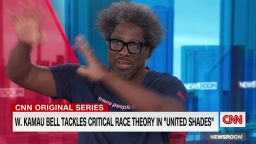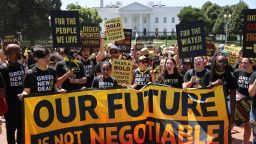Editor’s Note: W. Kamau Bell is a sociopolitical comedian and author who hosts and executive produces the CNN Original Series “United Shades of America.” With Kate Schatz, he is the co-writer of the new book “Do the Work! An Antiracist Activity Book.” The views expressed here are his. Read more opinion on CNN. To learn more, watch “United Shades of America” Sundays at 10 p.m. ET/PT.
The United States of America is a particularly weird name for a country. Most countries have one-word names, made up of only a few syllables. And those names often have thousands of years of history behind them. They come from the language of the people who come from those lands.

But that’s not the story of our country’s name. Think about it. The United States of America: If you have to tell people that you are united, then you probably are not.
Our name sounds like a negotiated settlement, which it was. Except not everybody who had a stake in the settlement was invited to the negotiation table.
The story of the founding of the United States of America is about colonists from England and various European countries agreeing to put aside their differences to unite against the British. But nobody invited the Indigenous people of this land – who already lived here and who already had their own agreements in place – what they wanted or what they thought about these violent gentrifiers.
Nobody asked the Indigenous people, who already knew the land since time immemorial, how they thought this should best go down. Nope. The “founding fathers” just took the ideas they liked from Indigenous cultures, threw away what they didn’t and slaughtered the Indigenous people in their way.
This Sunday’s episode of “United Shades of America” is about the Indigenous people of this land and how many of them are tired of being told where and how they can be on their land. Simply put, they want their land back.
Think about how much of this nation is considered quintessentially “American” – when in reality it is a straight up desecration of Indigenous lands. For many Americans, Mount Rushmore is one of the country’s most patriotic and awe-inspiring symbols. Like a giant apple pie wrapped in a Kid Rock T-shirt. Yeee-haw! But for others, it’s a reminder that this country was intended to be Whites only. Don’t believe me? The sculptor of Mount Rushmore, Gutzon Borglum, had ties to the Ku Klux Klan.
In the episode, I met with Nick Tilsen of the Oglala Lakota and Krystal Two Bulls of the Northern Cheyenne and Oglala Lakota. They are a part of a nonprofit called NDN Collective. Their organization fights, as they say it, to put “Indigenous lands in Indigenous hands.” We met at the entrance to Mount Rushmore in the Black Hills of South Dakota.
But Indigenous folks don’t call it that. There are different names depending on the tribe, but it is commonly referred to as Six Grandfathers. Tilsen elaborated, “Our people called this a Ȟe Sápa, and it was a sacred site that they (the US government) blew up to carve the faces of four presidents into it.”
The Black Hills specifically has been home to many Indigenous communities. And after many wars and battles between settlers and Indigenous tribes, in 1868, the United States signed the Treaty of Fort Laramie, which designated millions of acres west of the Missouri River for – and this part is important – the absolute and undisturbed use and occupation of the Great Sioux Nation, which encompasses over a dozen tribes.
And despite how Westerns make it sound, a treaty is a serious thing. Or at least it is supposed to be. A treaty is a legally binding agreement between two sovereign nations. It is a contract that is created to make sure each country’s sovereignty is respected. The United States of America has treaties with nations around the world. The State Department even regularly puts out a public document called “Treaties in Force” that lists all of our current treaties. The one from 2020 is 570 pages long.
This is to show that the United States keeps track of its agreements. That is, unless you are one of the sovereign Indigenous nations of this land. Wherever I am talking to Native American activists about the hundreds of treaties signed with their people, I always ask how many of the treaties the United States has broken. Krystal responded the same way that they all do: “All of them.”
Let’s make something absolutely clear. When the United States signed hundreds of treaties with sovereign Indigenous nations and then broke them all, the United States violated its own constitution, hundreds of times.
In 2020, the NDN Collective launched the Land Back campaign to demand that the United States government honor all its illegally broken treaties and return Mount Rushmore to the management and stewardship of native peoples. Obviously, Nick and Krystal are aware that giving the land back is – at the very least – a challenging idea for most non-Indigenous people to accept.
I think many non-natives have a hard time conceiving of giving the land back to Indigenous folks because we frame it through American capitalism. American capitalism says if I give you something then I am losing the thing I gave you, so you should give me something in return, preferably money. Hopefully, you’ll give me way more money than the initial thing is worth.
But that’s not how things work in Indigenous societies. You will hear in this episode that they didn’t have homelessness and poverty before the colonizers showed up, because everybody took care of everybody. Honestly, what Indigenous people are saying now is give us the land back because we can do a much better job of taking care of it than you all have done. As we learned in the “California is Burning” episode of “United Shades of America” earlier this season, the native people of California didn’t have the wildfire problems Californians have today, because they knew how to take care of the land.
It’s not just about the land either – it’s about taking better care of the people living on it, too. I met with two activists, Sunny Red Bear of the Cheyenne River Sioux (also a part of the NDN Collective) and Annita Lucchesi of Cheyenne and Italian descent. They are a part of a new generation of activists who are getting attention on missing and murdered Indigenous women (MMIW) across North America. Annita also created a national MMIW database that’s changing how police handle unsolved cases.
Annita told me, “My reservation is policed by the Bureau of Indian Affairs. And we went a whole year without a criminal investigator. So, there’s a stack of murders that never even got started investigated because there’s no one there to do it.” In fact, the government and the tribes don’t even agree on how many MMIW cases there are. Indigenous groups report that there are almost 6,000 cases nationally of MMIW. But the Department of Justice’s missing persons database only has 116 cases.
Indigenous activists are working hard to make the DOJ’s numbers make more sense. Thanks to the 2021 appointment of Deb Haaland of Laguna Pueblo as Secretary of the Interior, now there’s help. Haaland is the first Indigenous cabinet secretary in US history. She announced a national missing and murdered unit to help solve cases of MMIW. But it shouldn’t have taken such a high-level appointment to make this a priority, to give Indigenous folks back a piece of their sovereignty.
And such a small piece it is. Think about being a native person in this country. You grow up hearing stories of how your people hunted, fished, practiced sacred rituals and just generally moved freely across the land. And today in 2022, in order to practice those rituals in a national park, you have to ask for permission. And we all know how the government works – you might get turned down for any number of “didn’t put the cover sheet on your TPS reports” reasons. And again, you know this is your people’s land since – say it with me – time immemorial. That’s to say nothing about the fact that billions of dollars of gold was extracted from the Black Hills alone, and no percentage went to Indigenous folks. Nope. Just another broken treaty. Not that the native people would have taken a percentage of the theft.
In fact, in 1980, the Supreme Court ordered over $100 million to be paid to the Great Sioux Nation because of the broken treaty. But the nation hasn’t taken the money. And since 1980 that original $100 million has grown to more than $2 billion. But despite the poverty that they face, the Great Sioux Nation refuses the money now as they did then. Because the land was never for sale. It is bigger than money. If you kidnap my grandma, I’m not going to come up with a dollar amount that makes it okay with me.
The Land Back Movement is best understood when we think about it less as reparations and more as restoration. And if that makes you nervous, again think of the world of Nick Tilsen, who says: “Native people want all of our land back in this country. And the conclusion that people jump to that that’s a bad thing is the wrong conclusion.”






